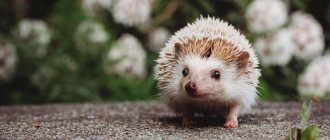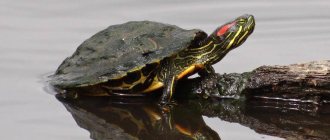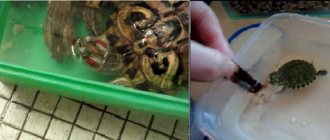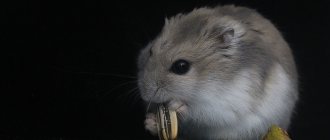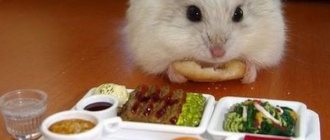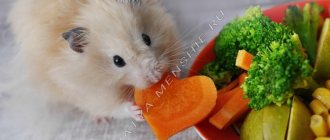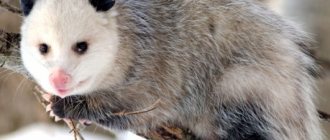A balanced diet is the basis for the proper development of any dog. It is important for owners to know what will be preferable: industrial dry food or natural food prepared from fresh ingredients. Let's consider what to feed the Pekingese. After all, this breed has its own developmental and physique characteristics that must be taken into account.
Pekingese nutritional features
The Pekingese's diet, like any breed, will depend on age, health and time of year. Each owner decides on the type of food independently, not forgetting to adjust it depending on the characteristics of his “lion cub”.
We note that the Pekingese's fangs are somewhat underdeveloped, which dictates the need to additionally grind the food: natural products should be cut into small pieces, and dry food should be soaked.
Both ready-made food and natural food are suitable for the breed. The main thing is that the natural products are fresh, and the prepared food belongs to the super-premium or holistic class.
Prohibited Products
There are foods that are strictly forbidden to give to Pekingese:
- tubular hollow bones;
- sugar, chocolate, sweet pastries
- salt, spices;
- smoked and fried foods;
- pork;
- potato;
- flour products;
- citrus fruits, grapes, raisins, avocados;
- hot or stale food.
It is also not advisable to give representatives of this breed fresh bread, pasta, bananas, onions and garlic. It is not necessary to exclude these foods completely. There must be moderation in everything.
Feeding dry food
Ready-made food has a number of advantages:
- ease of use and storage;
- balanced diet;
- there is a very wide range on the market, allowing you to choose the type for the most picky dog of any age;
- various types of medicinal feeds.
To feed the Pekingese, they choose super-premium and holistic class food.
Feed comparison
Monge dog grain free mini
The complete composition does not contain grains (they are replaced by potatoes), but is rich in protein (poultry meat). The combination of Omega-3 and Omega-6 is optimal for Pekingese wool. To maintain the health of your dog's joints, it contains chondroitin and glucosamine.
Pro Plan Small & Mini Adult Optidigest
The Pro Plan line includes a wide variety of options. This type (with lamb and rice) is suitable for dogs with sensitive digestion. The product contains corn, which is a common allergen.
Royal farm adult mini chicken
Super-premium complete food that does not contain soy and millet. A special recipe, which contains L-carnitine and a complex of probiotics, allows you to control body weight and prevent the development of obesity.
Bosch mini adult with lamb and rice
The recipe allows small dog breeds to get maximum energy value from a small portion of food. The size and structure of the granules are perfect for Pekingese fangs. Composed of almost 25% protein (poultry) and 18% rice, lamb meal is 5%.
We also performed a detailed analysis of the following feeds: Proplan, Monje, Dog Chow, Brit.
When to change food
The need to change food may arise in the following cases:
- signs of an allergic reaction appeared (scabies, rash, crusts in the ears, diarrhea);
- external signs have appeared indicating a lack of nutrition (hair loss or dullness, layered and breaking claws, plaque on the teeth);
- the Pekingese shows signs of excess weight;
- the age of the dog and its condition (pregnancy, illness) change.
The introduction of a new type of food should occur gradually. You should strictly monitor the dog’s body’s reaction to a new type of food.
General recommendations
The Pekingese is a rather small dog, but this does not mean that it has a reduced appetite . They are super energetic in this regard, and the breed's body requires a diet rich in nutrients, healthy fats, and the lion's share of meat in order to feel active, healthy and reasonably well-fed.
This is interesting! Pekingese that live a sedate, inactive life consume about 300 calories per day, while moderately active dogs should move closer to 400 calories. Very active representatives will need a little more; the calorie content of their diet can be close to 600 calories.
At the same time, it is important to take into account the individuality factor of each pet, carefully looking at the personal needs of each individual dog. In determining the qualitative and quantitative composition of the menu, factors such as weight, energy level, the presence of pregnancy or small puppies that are breastfed, and many others play a role. etc. The main thing is not to overfeed the animal. This dog does not do well when overweight.
Healthy eating rules
Perhaps the primary task when feeding Pekingese dogs is to avoid overeating, as they are extremely poor at self-control. The Pekingese does not feel boundaries, and can eat much more than the prescribed portions, even though it has a small stomach.
Therefore, it is important to strictly follow the rules.
- The feeding regime should not be disturbed. Food should be given at strictly defined hours.
- The temperature of the food is also important. Dishes should not be too cold or hot, as this can harm the animal’s digestive system. Food should be at a comfortable warm temperature.
- Salt is not welcome. You should avoid it completely, especially when cooking meat. Or add in minimal quantities.
- The main food product of the Pekingese is meat and meat by-products; other products occupy only half or a third of the total volume consumed.
- Liquid food is not suitable for this breed. It is too difficult for them to eat it due to the physiological structure of the muzzle.
- It is important from the first days to determine one place for the dog’s meal, organizing there a bowl of clean water, which is in the animal’s constant access.
- Certain dog treats have a place in the diet of a Pekingese dog. However, the diet should consist of a variety of foods. If the animal refuses a variety of food, demanding certain favorite foods, you can put the bowl aside, and then offer the same food again after a while. Most likely, a hungry animal will not behave so stubbornly.
Natural nutrition
The Pekingese is a dog with unique health problems. And obesity is the main enemy in the fight against these diseases. As a rule, they have a predisposition to several diseases, the chances of developing which increase if the animal has a shortened muzzle.
Since he is a small dog, he may be prone to some common health problems . Some of them are genetic, but most can be corrected with a regular diet and a sufficient level of activity. To keep your Pekingese's joints and ligaments in good working order, you need to provide him with a diet rich in chondroitin, glucosamine and omega-3 fatty acids.
A diet enriched with ingredients such as blueberries, broccoli, carrots, fish, eggs and garlic will help your Pekingese maintain healthy vision. These products also provide a boost to the animal's immune system. Veterinarians do not agree on whether to feed the Pekingese with natural food or ready-made industrial food. Most argue that the finished product cannot fully satisfy all the needs of each individual dog, others make the right choice towards premium quality ready-made formulations.
The basis of the Pekingese's natural diet is meat products - whole meat and animal by-products. Rabbit, chicken and turkey are most preferred as they are highly digestible and low in fat. Meat should be given in the form of fillets or meat pieces. The animal is unable to eat cartilage and bones due to the structure of its mouth. The same applies to fish; bones must be removed from it before serving; Pekingese are not encouraged to eat pollock fish.
This is interesting! As a carbohydrate component, these dogs can be given 4 types of porridge: millet, rice, buckwheat and oatmeal. You should be careful with buckwheat; veterinarians believe that its frequent use leads to the development of urolithiasis in dogs of this breed.
Tomatoes and carrots, which are allowed to be given fresh, are perfect vegetables. As well as heat-treated beets, zucchini or white cabbage. From fruits, the animal will like peaches and apples, as well as other fruits, with the exception of kiwi and citrus fruits, which can cause an allergic reaction. Parsley and lettuce will be an excellent substitute to compensate for the lack of vitamin C in the diet.
A sufficient supply of dairy products is important for puppies. The addition of calcined cottage cheese and kefir to the diet is especially welcome. With age, the need for milk in dogs of this breed disappears, but cottage cheese and fermented milk foods remain on the menu until their last days.
Dry and/or wet food
You can safely choose both types of food as food for your Pekingese. Eating only moist, soft food does not allow you to sufficiently massage the animal’s gums, which can lead to the development of oral diseases.
Many veterinarians are positive about menus that include dry food. But for this they must be carefully selected, taking into account the age and other individual characteristics of the animal, and at the same time be of the highest quality. On a dry food diet, the animal should be additionally given fermented milk products, but in a separate dose, since to digest food and other food, different amounts of enzymes necessary for processing are released in the dog’s stomach. Eating different types of food contributes to indigestion, which is dangerous to your pet’s health on an ongoing basis.
Leading breeders and veterinarians believe that it is impossible to purchase good food on the store counter. It can only be purchased at a veterinary pharmacy or from a breeder. At the same time, when buying a puppy, it is better to buy food from a nursery so that the baby does not have to adapt to the new food.
Pedigree feed lines
The Pekingese is a small purebred dog with a low activity level. The following brands of food are recognized as the best for her menu:
- Royal Canin Gastro Intenstinal – prescribed by leading veterinarians for digestive problems;
- Eukanuba – taking into account the level of activity and various breed characteristics of animals;
- Royal Canin Mini Exigent is especially tasty for dogs with picky tastes.
Return to content
Natural diet
Pekingese are big gourmands who are ready to give up regular food after trying an atypical treat. The basic rule: strict regime and avoidance of all sorts of harmful goodies in the diet.
Dogs of this breed are prone to obesity, and given their low weight, even an extra 200 grams is fraught with serious problems with the heart, kidneys and joints.
Bones are excluded from the diet; Pekingese teeth simply cannot cope with them, but cartilage is welcome. Meat can be boiled or given raw (after freezing), offal and fish can be boiled. Remember that the fish must be boneless.
Vegetables are stewed or served raw, as are fruits.
When compiling a natural diet, use the rule: more than half of the daily portion should be protein foods, the rest should be vegetables, fruits, and cereals.
When feeding natural food, you will need specialized vitamin and mineral complexes so that your pet receives the full range of nutrients.
The basis of the Pekingese menu should be:
- lean meat;
- offal (they should not be a substitute for meat);
- low fat fermented milk products;
- fruits and vegetables (any seasonal fruit, zucchini, pumpkin, carrots);
- fish (use only sea fish);
- cereals (rice and buckwheat).
Here is a very interesting opinion from the owner of a Pekingese about proper nutrition.
Sample menu for the week
| Day of the week | Menu (1, 2 feedings) |
| Monday |
|
| Tuesday |
|
| Wednesday |
|
| Thursday |
|
| Friday |
|
| Saturday |
|
| Sunday |
|
Sample menu for the day
The amount of food consumed by an adult Pekingese should be 3-3.5% of the animal's body weight. For example, a dog weighing 5 kg per day should receive 150-175 grams. natural food.
Sample menu for the day:
- boiled beef, offal (beef tripe, heart) – 90-100 gr.
- boiled or raw vegetables (carrots, zucchini), greens – 20-25 gr.
- boiled rice – 15-20 g;
- kefir (fat content 1-2.5%) – 1 tbsp;
- cottage cheese – 20 gr. (1 tbsp);
- olive oil – 1 tsp;
- half an egg yolk;
- vitamins according to dosage;
- fresh water.
An adult Pekingese at home needs to be fed twice a day: morning and evening, at the same time. Accordingly, the daily portion of food for the dog should be divided in half. It is best to give food after a walk - then the pet will eat with appetite.
What not to feed
Pekingese are always happy to receive a portion of food from the owner's table. This is strictly prohibited! In addition, the following foods should be excluded from the diet:
- legumes and potatoes;
- fatty meat (pork, lamb);
- sweets;
- and sausages.
Choose one type of food, do not combine or feed the Pekingese with natural products if he is already eating ready-made food. This will lead to gastrointestinal upset and obesity in the dog.
Watch the continuation of the video above, about what you should not give to a Pekingese.
Pet's refusal to eat
The reasons why a dog refuses to eat can be different:
- stress;
- bad teeth;
- digestive problems;
- internal injuries.
Note! It is advisable to contact a veterinarian as soon as possible - establishing the cause of lack of appetite at home can be very difficult, and sometimes impossible.
By remembering the simple rules given above, every breeder will be able to provide his beloved Pekingese with proper, tasty nutrition, thanks to which he will live a long and happy life.
What to feed a Pekingese puppy
| Puppy age (months) | Number of feedings per day | Menu |
| Up to a month | From the first week of life - every 2 hours. |
|
| 1-2 | 6 |
|
| 2-3 | 5 |
|
| 3-6 | 3 |
|
| 6-8 | 2-3 |
|
| From 8 | 2 |
|
Watch a short video of how a two-month-old girl eats!
What is important to consider when feeding a puppy
Very often, breeders wonder what to feed a 2-month-old Pekingese puppy. The question is not easy - at this time he is just weaning himself from mother's milk, so the diet must be balanced.
What foods should be in a puppy's diet?
First, you need to figure out what to feed your one-month-old Pekingese. It is best to include foods rich in proteins and fats in your diet. First of all, this is milk, cottage cheese, minced meat, meat broth. Fermented milk products are useful - kefir improves stomach function and reduces the likelihood of constipation due to unusual foods.
At 3-4 months you can also add porridge cooked in broth. And at six months - mix porridge with vegetables, like adult dogs.
Remember! A balanced diet does not go well with snacks - they often lead to obesity.
Diet: frequency of feedings by month
Everything is simple here - the older the puppy gets, the less often he needs to be fed, but the portion increases. By month it looks like this:
- up to 2 months - 5-6 meals;
- 2-4 months - 4-5 appointments;
- 4-6 months - 3-4 doses;
- 6-12 months - 3 doses;
- from one year - 2 doses.
What to feed an adult Pekingese
When feeding an adult dog, you should consider:
- Serving size should be adjusted depending on activity and weight;
- if the dog leaves food, you should reduce the portion, if it rattles the bowl, increase it;
- in summer, reduce the amount of protein and portion, increasing the amount of fiber; in winter, vice versa;
- Pekingese are gourmets, so their diet should be varied;
- The serving size of the dry product is indicated on the packaging and is a recommendation.
If food, which one to choose?
Pekingese owners should pay attention to the following popular brands of dry and wet food: Acana, Almo Nature, Brit, Belcando, HILL'S, Go!, Purina, Royal Canin, as well as biologically appropriate Orijen food.
Recommendations:
- When feeding prepared foods, it is important to provide your pet with plenty of fresh water.
- You cannot mix food from different brands and feed it at the same time as natural food.
- The Pekingese should be fed strictly according to the norms indicated on the packaging.
Feeding after childbirth
The bitch’s diet after giving birth should not differ from that in the second half of pregnancy:
- 3 times a day;
- the portion increases due to proteins;
- to restore the bitch after giving birth, use a line of food intended for puppies;
- Naturally, they use a complex of special vitamins for lactating bitches.
Photo: flickr.com
Vitamins and mineral supplements for Pekingese
If Pekingese are fed natural products, they must be given vitamin and mineral complexes. Then both the adult dog and the puppy will receive all the elements necessary for health.
Supplements recommended for Pekingese:
- Unitabs ImmunoComplex – contains coenzyme Q10, normalizes metabolism, increases resistance to infections;
- WOLMARWinsomeProBioBoosterCaMini – multivitamin complex with calcium restores intestinal microflora and prevents disruptions in mineral metabolism;
- 8 in 1 ExcelMultiVitaminSmallBreed – indicated in the off-season for the prevention of vitamin deficiency in puppies and adult dogs, prevents problems associated with an inadequate diet.
Vitamin supplements are not used when feeding dry food, because all the necessary elements are already included in it.
Choosing a place and utensils for feeding
An important role in proper feeding is played by the choice of place and dishes for the Pekingese puppy. Absolutely all puppies have a tendency to play enthusiastically and suddenly remember that they really want to eat. The puppy drops everything and literally flies to the bowl. Emergency braking on a slippery kitchen floor leads to slipping, somersaults and other tricks. This situation is fraught with injury, especially when it comes to miniature and very large puppies.
To keep your Pekingese puppy safe, make the eating area non-slip. The simplest method is to cover the floor with a special rubber mat. In addition to being comfortable for your puppy, the mat is easy to clean to keep the eating area clean.
How to choose the right bowls? Because Pekingese have short faces, the bowl should be wide and shallow. In order for a dog to take food from a bowl, it needs to open its mouth completely, take this into account when choosing a bowl based on its diameter.
You don't need to buy a stand for your Pekingese puppy's bowls, but make sure they don't slide around on the floor. Give preference to stainless steel or ceramic bowls. Ceramic bowls are heavier and do not slip on the floor. Stainless steel bowls are easier to clean and can be boiled.
